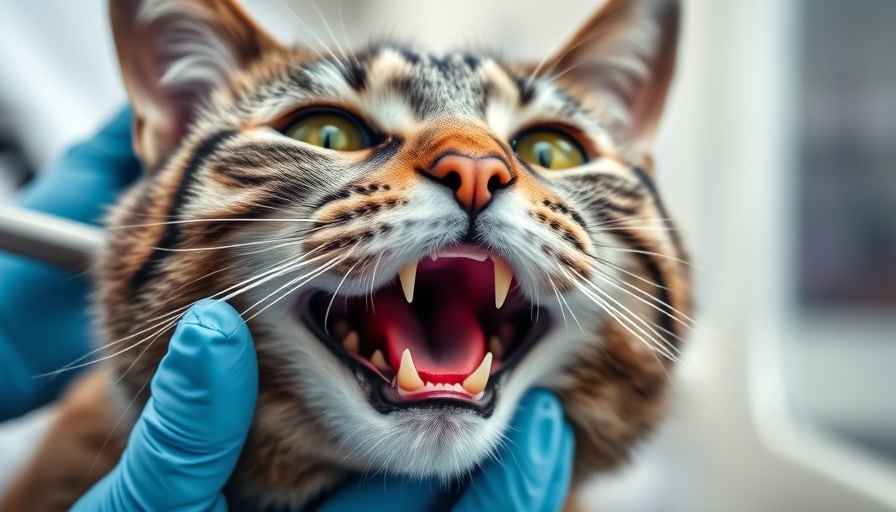
Understanding Pale Gums in Cats: A Critical Health Indicator
When it comes to our feline friends, their health can often be indicated through subtle signs that, if overlooked, could lead to severe consequences. One such sign is pale gums. Typically, healthy cats exhibit gums that are light pink and moist, but a shift in this coloration can signify a serious health issue. Actions taken swiftly upon noticing this change are essential for safeguarding your pet’s well-being.
What Causes Pale Gums in Cats?
The causes of pale gums in cats range from anemia and chronic kidney disease to severe parasitic infections. Anemia, often caused by blood loss from trauma or conditions like autoimmune diseases, can diminish the number of red blood cells critically needed for oxygen transport throughout the body.
Furthermore, chronic kidney disease (CKD) is commonly found in older cats. As the disease progresses, the kidneys lose their ability to produce erythropoietin, a hormone crucial for the creation of red blood cells. Consequently, cats may not only show pale gums but also exhibit lethargy and decreased appetite, further underscoring the dire need for veterinary care.
Identifying a Veterinary Emergency
When you notice your cat’s gums turning pale, it’s essential to gauge the overall situation. Pale gums paired with lethargy or weakness often indicate a veterinary emergency. Cats can be stoic creatures, masking discomfort, so it is up to us as pet owners to remain vigilant. Conditions like heart disease can hinder blood circulation leading to oxygen deprivation, presenting a serious health risk that requires immediate attention.
Diagnosis and What to Expect at the Vet
If your cat displays pale gums, a visit to the veterinarian is necessary. The veterinarian may employ a combination of physical examinations, blood tests, urinalysis, and possibly imaging to identify the underlying cause. The approach may include checking for internal bleeding, assessing for infections, or evaluating kidney function. Understanding the need for comprehensive testing can help you remain calm and informed during your visit.
Treating Anemia and Other Health Issues
Treatment for pale gums will depend greatly on the diagnosis. Typical interventions may include oxygen therapy to enhance breathing, intravenous fluids to correct dehydration, blood transfusions for severe anemia, or medications tailored to underlying conditions. Each case is unique, and prognosis varies depending on the cause. Being informed about potential treatments can equip you during discussions with your veterinarian, allowing for collaborative decision-making about your cat's care.
Common Misconceptions About Cat Health
Many pet owners may stereotype certain symptoms as minor nuisances rather than urgent signs of distress. While a single instance of pale gums might not seem alarming, chronic issues can manifest significantly worse over time without intervention. It is vital to debunk myths around pet health to ensure prompt responses to symptoms that might appear innocuous initially. Your cat relies on you to be their advocate in health matters.
Emotional Bonds and Responsibility
As cat owners, we develop deep emotional ties with our pets. Recognizing pale gums can immediately stir feelings of concern; however, it can also be a pivotal moment for strengthening our responsibility as caretakers. Supporting our pets in health and happiness is integral to sustaining those cherished connections. Addressing health concerns quickly contributes to a happier, longer life together.
Taking Action: Keeping Your Cat Healthy
The bond between a cat and its owner is enriched through a shared commitment to health and well-being. Consider regular wellness check-ups for your feline friend, as these can often catch ailments early, preventing circumstances where pale gums become an alarming emergency. Staying informed about your cat's health and recognizing signs that demand attention can strengthen the loving relationship you already share.
 Add Row
Add Row  Add
Add 


Write A Comment